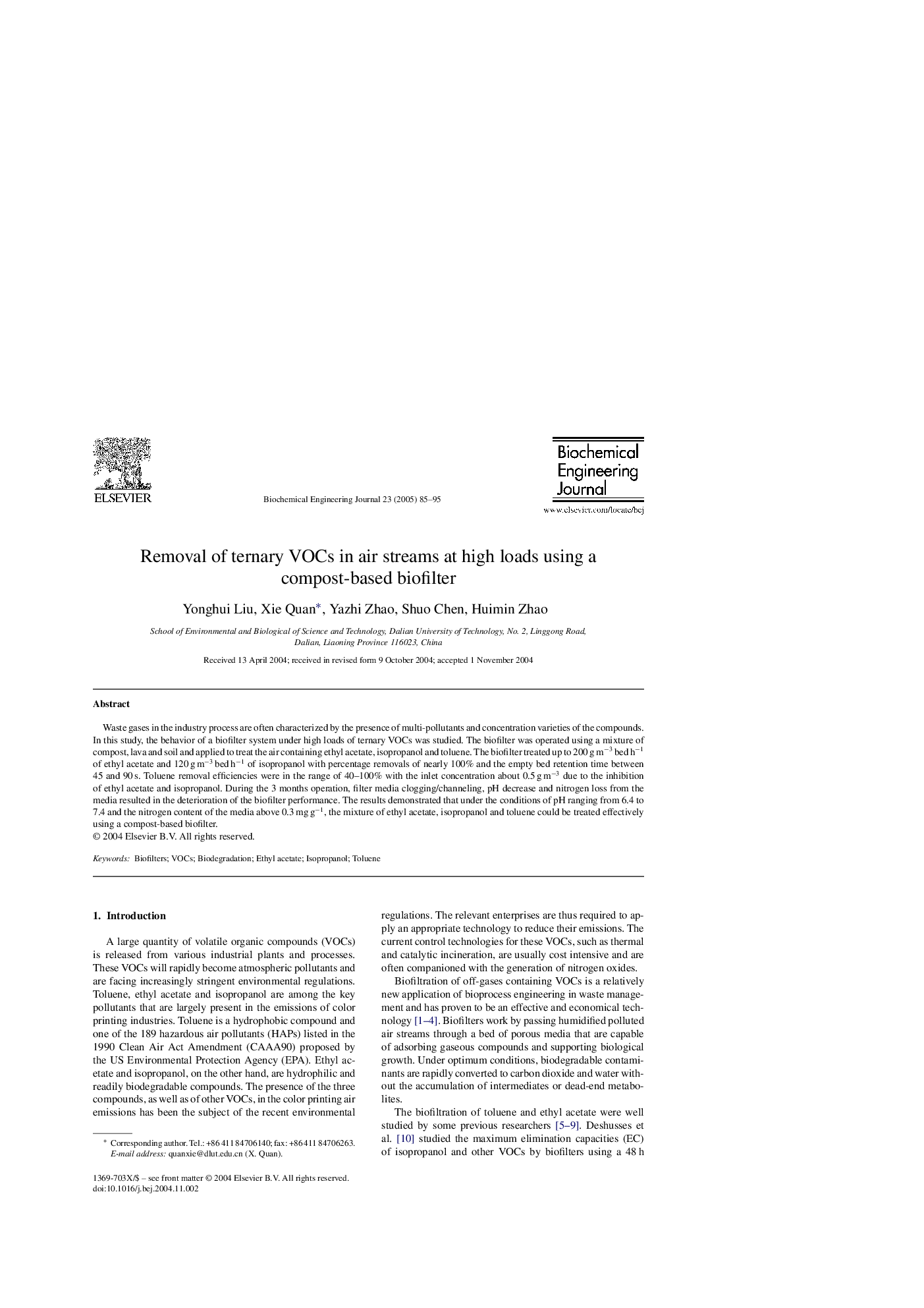| Article ID | Journal | Published Year | Pages | File Type |
|---|---|---|---|---|
| 10160943 | Biochemical Engineering Journal | 2005 | 11 Pages |
Abstract
Waste gases in the industry process are often characterized by the presence of multi-pollutants and concentration varieties of the compounds. In this study, the behavior of a biofilter system under high loads of ternary VOCs was studied. The biofilter was operated using a mixture of compost, lava and soil and applied to treat the air containing ethyl acetate, isopropanol and toluene. The biofilter treated up to 200 g mâ3 bed hâ1 of ethyl acetate and 120 g mâ3 bed hâ1 of isopropanol with percentage removals of nearly 100% and the empty bed retention time between 45 and 90 s. Toluene removal efficiencies were in the range of 40-100% with the inlet concentration about 0.5 g mâ3 due to the inhibition of ethyl acetate and isopropanol. During the 3 months operation, filter media clogging/channeling, pH decrease and nitrogen loss from the media resulted in the deterioration of the biofilter performance. The results demonstrated that under the conditions of pH ranging from 6.4 to 7.4 and the nitrogen content of the media above 0.3 mg gâ1, the mixture of ethyl acetate, isopropanol and toluene could be treated effectively using a compost-based biofilter.
Related Topics
Physical Sciences and Engineering
Chemical Engineering
Bioengineering
Authors
Yonghui Liu, Xie Quan, Yazhi Zhao, Shuo Chen, Huimin Zhao,
